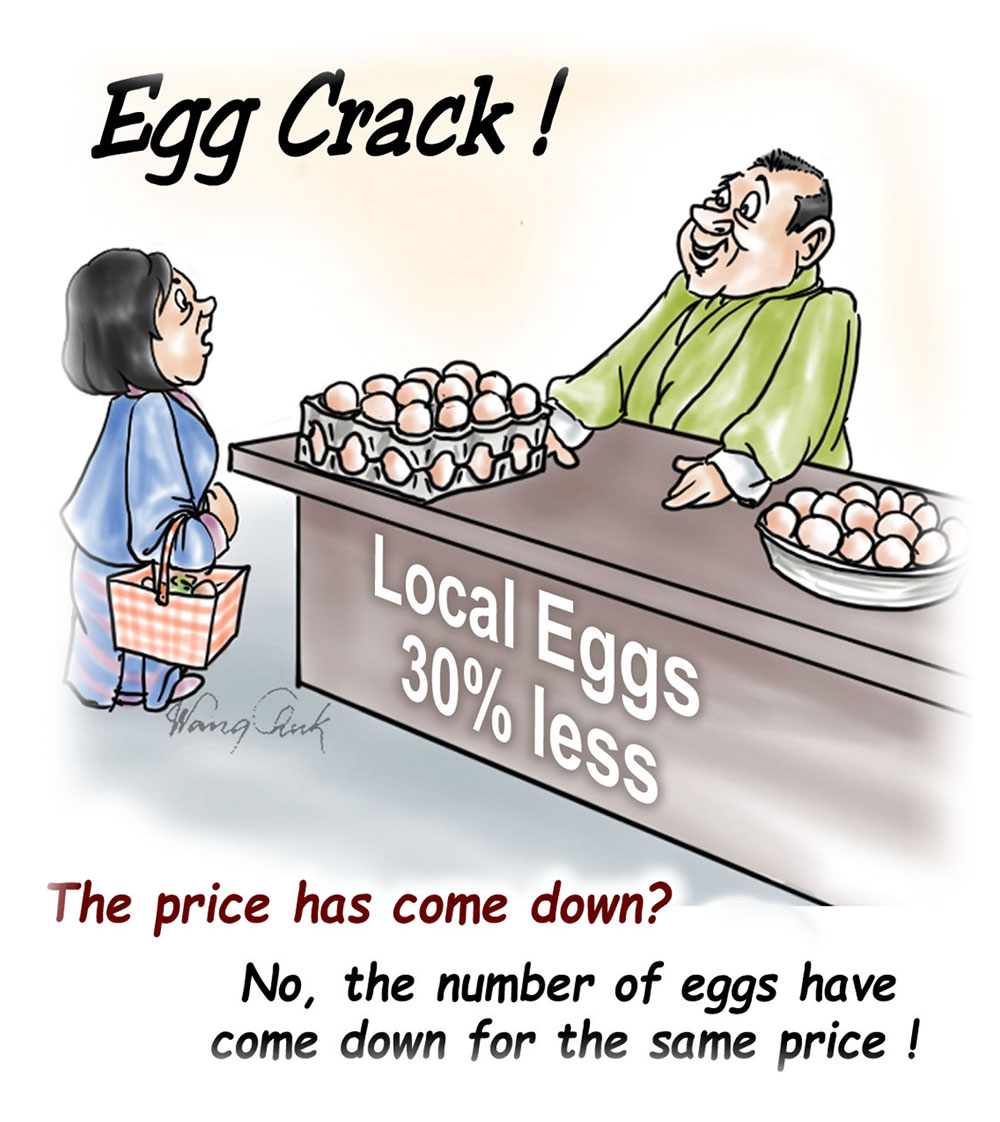Chhimi Dema
Iron Female Ox Year-Agriculture: The year 2021 has tested Bhutan’s determination in achieving its food self-sufficiency goals. The pandemic further worsened the agricultural marketing gap between farmers and consumers. The egg self-sufficiency status crashed and the winter vegetable programme suffered, forcing the government to import the two items to meet demand.
The second nationwide lockdown in the year exposed the lack of coordination in marketing the produce. Farmers didn’t know who to contact to market their produce, and deprived many of their income.
A commercial farmer in Zhemgang called out to the concerned authorities but she was told “there was no market”. She is among many who never found a market for their produce. A Thimphu-based vegetable distributor incurred a loss of Nu 0.5 million (M) because of vehicle permit restrictions.

Poor communication between agriculture officials in dzongkhags and farmers became evident as farmers went on to suffer losses. The agriculture ministry roped in FCBL to implement the buy-back vegetables. At one time, the agriculture minister was marketing potatoes on his social media page.
Farmers of Paro faced difficulties to market their cabbages, farmers of Samtse could not sell their ginger, Gasa farmers could not sell garlic and Zhemgang farmers are struggling to sell chillies.
To encourage the farmers to produce, the government bought from farmers through the buy-back scheme. In 2019, the government bought a total of 50 metric tonnes (MT) farm produces worth Nu 20.74M from the farmers. A total of 3,000 MT produce worth Nu 70M was bought in 2020.
The government incurred a loss of more than Nu 2.7M in buy-back of cabbage, and Nu 30M by FCBL in 2020.
According to the Bhutan Trade Statistics, Bhutan imported 103,872 MT of RNR commodities worth Nu 5,084 million from January to June 2021.
Rice was the major imported commodity (50,921 metric tonnes of rice) among cereals.
The Ministry of Agriculture and Forests’ target to achieve 60 percent rice self-sufficiency in the 12th Five Year Plan (FYP) remained question-able, considering the declining rice self-sufficiency ratio and the constraints facing paddy cultivation. The rice self-sufficiency in 2006 was 58.49 percent which dropped to 34.71 percent in 2019.
To increase rice production, 15,361 acres of land was developed and converted to wetland.
The Ox year began with a shortage of chilli because incessant rain had damaged nurseries and hampered production. The price of chilli rose to Nu 600 a kg. Consumers complained of vendors taking advantage of the scarcity.
On the other hand, local chilli growers could not find buyers in the capital because the market was flooded with illegally imported chillies.
Price of eggs spiked from Nu 320 to Nu 450 and at times even crossed Nu 500. Pandemic delayed the import of parent stock of layer birds and the death of chicken from the suspected contamination of Karma Feed’s poultry feeds caused a shortage of eggs.
The ministry came up with a new RNR Strategy 2040 to address the challenges in the sector through 114 initiatives and 11 strategies.
Big Ticket Initiative was started to substitute the import of livestock products and help increase food security. The initiative created new employments and is expected to reduce imports.
The ministry also started the Dog Population Control Flagship Programme that aims to achieve 100 percent sterilisation of free-roaming dogs, register, and vaccinate all pet dogs, and control feral dogs.
Despite all the adversities the ministry faced, the year of the Water Tiger is expected to be better after the abundant snowfall this winter.


